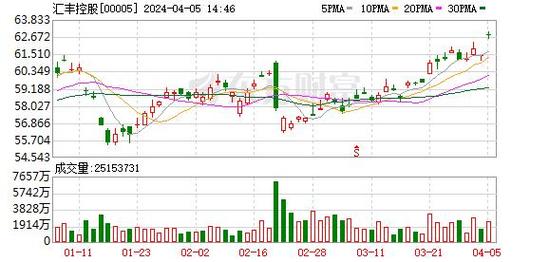马来西亚的港口都有哪些
Title: Navigating Malaysia's Port Stock Investment Opportunities
Investing in Malaysian port stocks presents a promising avenue for diversification and growth within the maritime industry. With Malaysia boasting several key ports strategically located along major shipping routes, the sector offers potential for robust returns. Let's delve into the dynamics of Malaysia's port industry, explore notable players, assess investment strategies, and offer prudent guidance for navigating this market.
Understanding Malaysia's Port Industry
Geographical Advantage:
Malaysia's strategic location in the heart of Southeast Asia positions it as a crucial maritime hub connecting the Pacific and Indian Oceans. This geographic advantage fuels the nation's port industry, facilitating international trade and maritime activities.Key Ports:
Among Malaysia's prominent ports are Port Klang, Port of Tanjung Pelepas, Penang Port, and Johor Port. These ports handle a substantial portion of the country's maritime trade, including containerized cargo, bulk commodities, and petroleum products.Government Initiatives:
The Malaysian government has implemented initiatives to enhance port infrastructure, efficiency, and connectivity, such as the National Transport Policy and the National Logistics and Trade Facilitation Masterplan. These efforts aim to bolster the competitiveness of Malaysian ports on a global scale.Major Players in the Malaysian Port Sector
1.
Westports Holdings Berhad (WPRTS):
Operating Port Klang, one of the world's busiest container terminals, Westports Holdings is a leading player in Malaysia's port industry. Its strategic location and advanced facilities contribute to its significant throughput capacity.2.
Pelabuhan Tanjung Pelepas Sdn Bhd (PTP):
Located in Johor, Port of Tanjung Pelepas ranks among the top container terminals globally. PTP's stateoftheart infrastructure and efficient operations attract major shipping lines, fostering substantial cargo volumes.3.
Penang Port:
Situated on the northwest coast of Peninsular Malaysia, Penang Port serves as a vital gateway for trade in the northern region. Its diverse cargohandling capabilities and ongoing expansion projects position it for sustained growth.4.
Johor Port Berhad:
Strategically located at the southern tip of Peninsular Malaysia, Johor Port plays a pivotal role in facilitating trade between Malaysia and Singapore. Its multipurpose terminals accommodate various types of cargo, including containers, liquid bulk, and dry bulk.
Investment Strategies for Port Stocks
1.
Evaluate Port Throughput:
Assess the historical and projected cargo throughput of targeted ports. Increasing throughput volumes often correlate with revenue growth for port operators.2.
Infrastructure Development:
Monitor investments in port infrastructure and expansion projects. Infrastructure enhancements can boost efficiency, capacity, and competitiveness, driving longterm value for investors.3.
Shipping Trends:
Stay informed about global shipping trends, trade patterns, and vessel sizes. Port operators exposed to growing trade routes and capable of accommodating larger vessels may outperform peers.4.
Financial Performance:
Analyze the financial performance and debt levels of port operators. Healthy balance sheets, strong cash flows, and prudent capital management are indicative of robust investment prospects.Guidance for Investors
1.
Diversification:
Consider diversifying your portfolio with exposure to multiple port operators to mitigate specific risks associated with individual companies or ports.2.
LongTerm Perspective:
Adopt a longterm investment horizon when investing in port stocks, as the industry's growth trajectory is influenced by macroeconomic trends and trade dynamics.3.
Risk Management:
Exercise caution and conduct thorough due diligence before making investment decisions. Monitor regulatory changes, geopolitical risks, and global economic conditions that may impact port operations and financial performance.4.
Consult Financial Advisors:
Seek guidance from financial advisors or investment professionals with expertise in maritime industries to formulate a wellinformed investment strategy aligned with your financial goals and risk tolerance.Conclusion
Investing in Malaysian port stocks offers exposure to a vital sector underpinned by robust international trade and strategic infrastructure development. By understanding the dynamics of Malaysia's port industry, identifying key players, and employing prudent investment strategies, investors can navigate this market with confidence and capitalize on promising opportunities for growth and diversification.
This HTML document provides comprehensive insights into investing in Malaysian port stocks, covering industry dynamics, major players, investment strategies, and guidance for investors. Whether you're a seasoned investor or exploring new opportunities, leveraging these insights can inform your decisionmaking process and enhance your investment approach in the maritime sector.
股市动态
MORE>-

火灾赔偿标准一览表
火灾保险赔偿标准火灾保险是一种重要的财产保险形式,旨在保护被保险人免...
-

深度解析航天电子的投资价值与未来潜力
对于许多投资者来说,选择正确的股票进行投资不仅是艺术,更是科学,在众...
-

深度解析豫光金铅,行业龙头,黄金矿业的投资潜力与风险探析
一、公司概述:豫光金铅,全称为河南豫光金铅股份有限公司,作为国内领先...
-

深度解析与投资攻略,三丰智能——探索智能化转型的科技巨头
公司简介三丰智能,一家专注于智能制造领域的高新技术企业,以其卓越的自...
-

深度解析东方国信,一只潜力与挑战并存的股市明珠
在风云变幻的股票市场中,东方国信无疑是一颗熠熠生辉的明星,以其稳健的...
- 搜索
- 最近发表
-
- 深入了解股票分析系统的功能模块,投资者的智能助手
- 探索688077,解锁科技新纪元的钥匙
- 综合保险查询,全面了解您的保障
- 东莞疫情新动态,新增1例无症状感染者,市民需保持警惕并加强防护
- 股票在线诊断软件,投资者的智能助手
- 探索铁路股,投资的铁轨与机遇
- 宁波联合(600051)深入解析与投资价值评估
- 同花顺个股分析网,投资者的智能助手
- 深入了解600705,最新动态与投资洞察
- 深入解析同花顺,如何找到并利用个股分析功能
- 辽宁疫情新动态,昨日新增7例本土无症状感染者深度解析
- 2021年端午节,传统与现代的交融
- 探索太平洋A股,投资海洋中的宝藏
- 药石转债,投资新机遇与风险分析
- 股票分析师的工作内容有哪些
- 大晟文化股票诊断,深入分析与投资策略
- 数字密码,解析688209背后的神秘故事
- 辽宁职校封闭管理下的病毒破防,疫情应对与心理调适指南
- 红太阳(000525)探索中国农药行业的领军企业
- 深入解析,股票诊断分析的艺术与科学
- 标签列表
-
- 兴业银行理财月月得益赎回规定 (4)
- 英伟达市值涨了多少倍 (4)
- 博时月月享基金安全吗 (4)
- 港股恒指遭遇重挫跌46% (5)
- 港股恒指怎么交易需要多少资金 (4)
- 主力资金净流入排行榜 (5)
- 股票财经方面有哪些 (13)
- 财经股票基础知识 (6)
- 最好的股票财经网 (8)
- 财经与股票 (10)
- 财经讲股票的栏目 (8)
- 谈论股票的财经频道 (7)
- 财经a股 (5)
- 财经类股票 (13)
- 股票初学者相关财经知识 (6)
- 财经诊股 (5)
- 财经类股票网站 (5)
- 财经股票入门基础知识 (4)
- 股票财经推荐 (5)
- 港股午评:恒指跌3.87%失守24000点 (4)
- 永赢基金行情 (4)
- 股票财经 (6)
- 财经股票怎么玩赚钱 (5)
- 财经股市大家谈 (5)
- 港股恒指今日收盘走势 (4)
